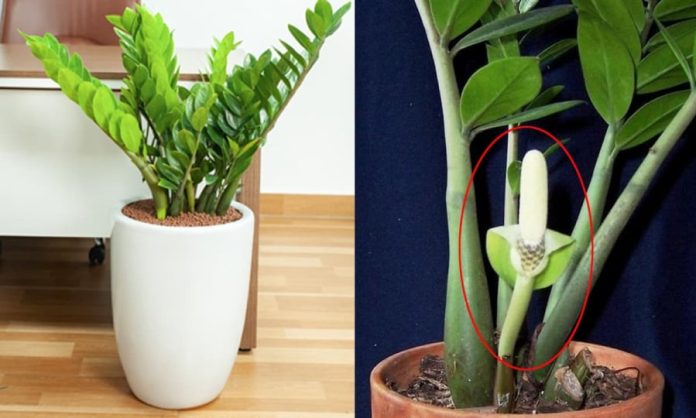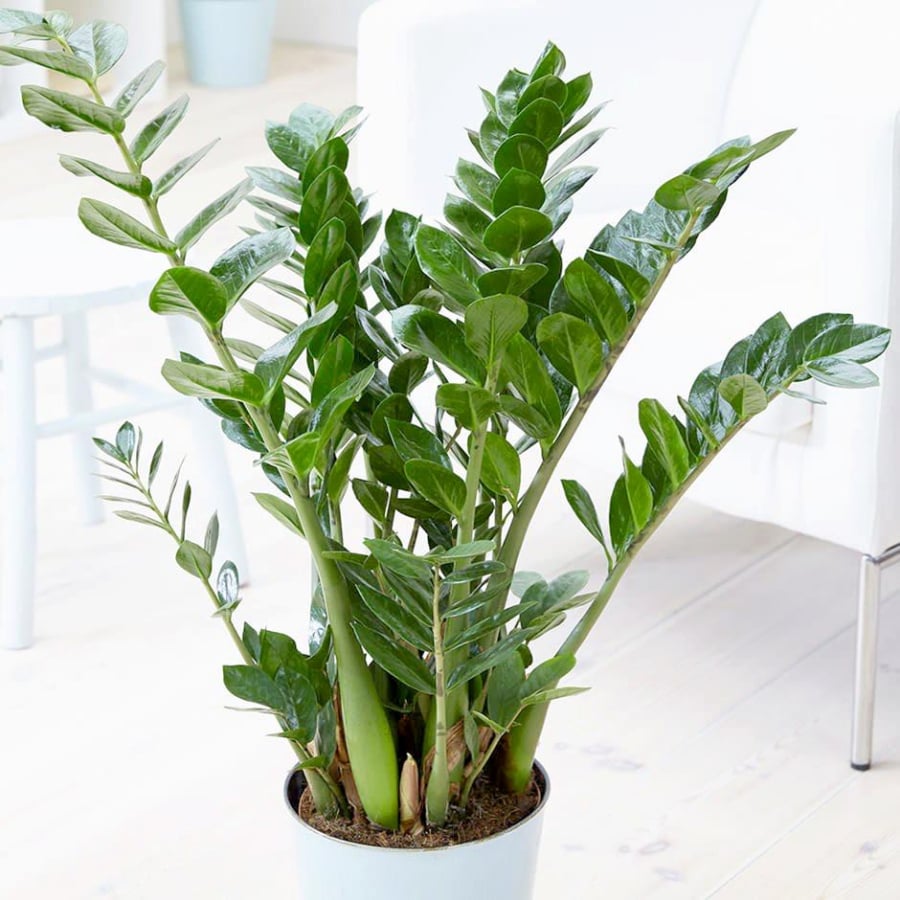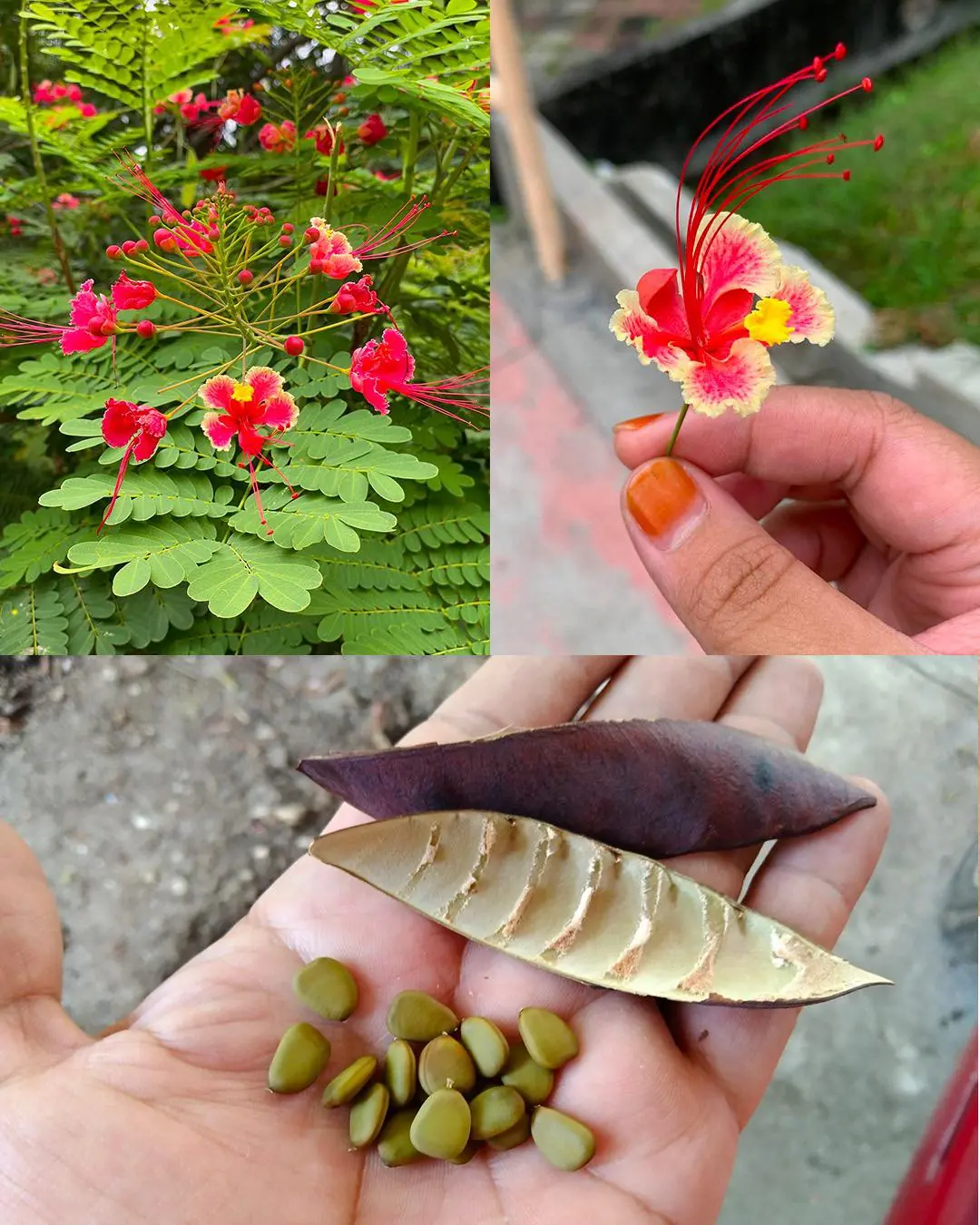
How to make the Money Tree flower and have fresh shoots to attract fortune

How to Make the ZZ Plant Bloom
Although the ZZ plant (Zamioculcas zamiifolia) is known for being easy to grow and low-maintenance, encouraging it to bloom is quite a challenge. So, how can you make your ZZ plant produce flowers?
Nowadays, the ZZ plant has become a popular choice for indoor decoration, not only because of its lush green appearance but also because it is believed to bring good fortune and positive energy according to Feng Shui. Many people believe that when a ZZ plant blooms, it symbolizes wealth, prosperity, and success in both career and health. However, flowering is a rare event, and not every ZZ plant will produce blooms—even under ideal conditions. Therefore, when a ZZ plant finally blossoms, it’s often seen as a good omen, signaling a period of growth, achievement, and abundance.
When and Why the ZZ Plant Blooms
Whether a ZZ plant blooms or not depends largely on how it is planted and cared for. Under the right conditions, the plant can produce flowers during the spring or autumn seasons—times when the temperature and humidity are balanced. These flowers are small, pale yellow or cream-colored, and usually appear at the base of the plant, often hidden among the leaves.
To encourage blooming, growers often use organic fertilizers or blooming stimulants during these seasons. However, patience is key—the ZZ plant usually only blooms after it has matured and developed multiple stems.
Ideal Soil and Growing Conditions
For a ZZ plant to thrive, the soil must be loose, well-drained, and nutrient-rich. Because its underground tubers are quite delicate, compacted soil can compress them and hinder growth. A good potting mix can include alluvial soil, coconut fiber, and crushed charcoal or perlite to enhance aeration and drainage. This combination ensures that the plant can breathe and absorb nutrients efficiently.
If you notice that your ZZ plant’s leaves are turning yellow or drooping, it could be a sign of poor drainage or overwatering—two of the most common causes of plant stress.
Fertilizing for Healthy Growth
The ZZ plant grows quite vigorously, so it needs regular fertilization, especially during spring and autumn. You can apply fertilizer every three weeks, and once the plant is established, continue feeding it about once every four weeks.
It’s best to use a balanced, slow-release fertilizer specifically designed for houseplants or ornamental foliage. Each time, sprinkle a small amount about 10–15 cm away from the plant’s base to avoid burning the roots. Over-fertilizing can cause root damage, so it’s better to feed lightly but frequently. After applying fertilizer, lightly water the soil to help nutrients soak in.
Proper Watering Technique
Because the ZZ plant has water-storing tubers, it is drought-tolerant and prefers dry, warm environments. Overwatering is one of the quickest ways to kill it, as it can lead to root rot.
The rule of thumb is: only water when the soil is completely dry. To check, insert a wooden chopstick into the soil—if it comes out dry, it’s time to water. If it’s still damp, wait a few more days. It’s better to underwater than to overwater this plant.
You can also mist the leaves lightly with a spray bottle to maintain humidity without soaking the soil. This helps the leaves stay glossy and prevents them from collecting dust. Occasionally, wipe the leaves with a soft damp cloth to remove dust and restore their natural shine.
Light, Temperature, and Humidity
Light is essential for all plants, including the ZZ plant. However, it does not tolerate direct sunlight well. Intense sunlight can scorch the leaves, causing them to curl or develop brown spots. When grown indoors, it’s best to place the plant in a bright, indirect light location—such as near a window, in the living room, or on a balcony with filtered light.
If the plant doesn’t receive enough light, it may grow slowly, turn yellow, or drop leaves. Moving it to a brighter spot often helps it recover within weeks.
The ideal temperature for the ZZ plant is between 25–27°C (77–81°F). When the temperature drops below 18°C (64°F), the plant may shed leaves and enter a dormant state. Below 5°C (41°F), it’s unlikely to survive. Fortunately, the ZZ plant adapts well to various humidity levels, but it prefers a moderately humid environment.
During hot summer months, when the air is dry, you can mist the plant occasionally to cool it down and keep the leaves hydrated. If any stems or leaves become rotten or wilted, remove them immediately to prevent the issue from spreading.
Final Thoughts
Encouraging a ZZ plant to bloom requires patience, consistent care, and the right growing environment. While its flowers are not particularly striking, their appearance carries symbolic meaning—representing luck, wealth, and success. With proper light, temperature, soil, and watering habits, your ZZ plant will stay vibrant and might one day reward you with its rare and beautiful blossoms.
So, take care of it lovingly, and when you finally see those small hidden flowers emerge, you’ll know that both your effort and your good fortune have begun to bloom. 🌸
News in the same category


Serrated Leaf Motherwort: A Precious Herb with Many Benefits

Banana flowers and their little-known uses

Eat these 5 fruits to avoid magnesium deficiency, keep your heart healthy and your bones strong.

How to cook black bean perilla water to detoxify the liver and nourish the kidneys

A miracle will happen with a handful of seeds under the bed, unfortunately it's just now

Pouring white sugar into laundry detergent: A little tip that everyone loves, saves a lot of money every year

Tips for dealing with moldy and peeling walls: Simple, inexpensive, any house can do it

Stop wasting money on these 10 pantry staples

Stop wasting freezer space on these 10 foods

Whoa, this completely flew under my radar

Stop cooking rice with these 10 mistakes

Stop washing produce the wrong way with these 10 mistakes

I didn't know

Stop cooking these 10 foods in aluminum foil

My nana taught me this hack to freshen carpets in 4 mins with 0 work. Here’s how it works

Tips for effective, safe and cost-saving pest control

Distinguish between clean bean sprouts and bean sprouts containing toxic chemicals with the following extremely simple tip.

How to make delicious beef stew at home extremely simple
News Post

Meet James West, The Black Man Who Invented The Electret Microphone

‘They Described a Man I Never Met’: Comedian Roy Wood Jr. Tells Shannon Sharpe He Learned To Love Watching How His Absent Dad Treated Another Family

This Brewery Is The Only Black-Owned Brewery In New York Brewing Its Beer On-Site

Joseph Deng Makes History as First Player From South Sudan to Sign a Professional MLB Contract

Meet The Specks, the Black Brother-Sister Duo Who Invented the Potato Chip

Meet Mr. & Mrs. Grady, Owners Of North Carolina’s Only Black-Owned Whole Hog Barbecue Smokehouse

Negro History Week: Here’s the True Story Behind Black History Month

Buckingham Palace statement in full as King Charles removes Prince Andrew’s title

Has the Bermuda Triangle Mystery Finally Been Solved

Put the entire roll of toilet paper in the refrigerator

4 Types of Shoulder Pain That May Signal Dangerous Cancer — Don’t Mistake Them for Simple Joint Problems

6 Body Parts That Turn Black May Signal Cancer — Don’t Ignore Them

Serrated Leaf Motherwort: A Precious Herb with Many Benefits

Banana flowers and their little-known uses

Eat these 5 fruits to avoid magnesium deficiency, keep your heart healthy and your bones strong.

The Amazing Power of Caesalpinia pulcherrima (Peacock Flower)

White Bumps or Spots on Lips: Causes and Effective Treatments

Corn Silk: 30 Health Benefits and How to Use It

Turmeric Dosage: How Much You Actually Need for Arthritis, Cancer, and Other Diseases
